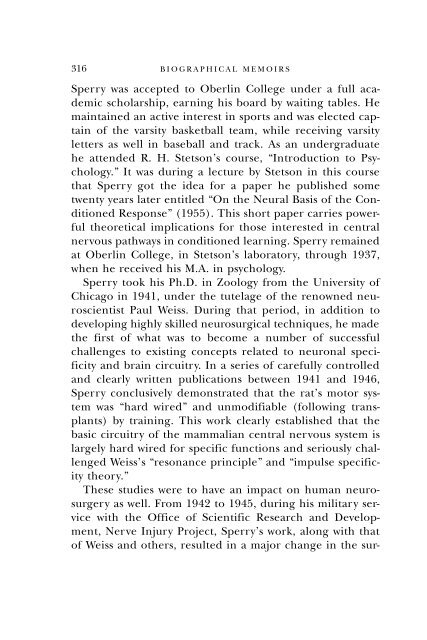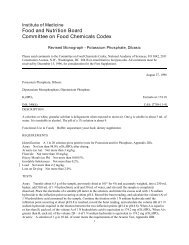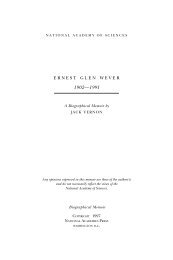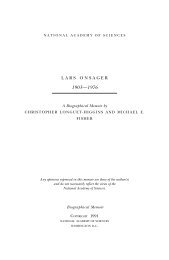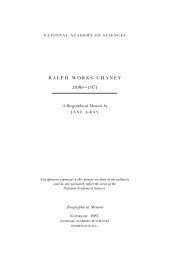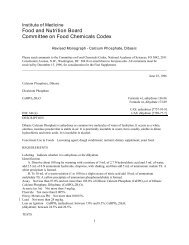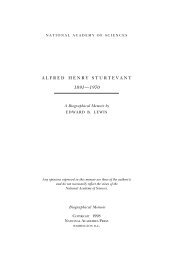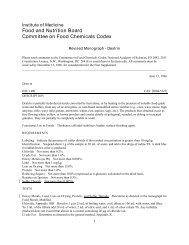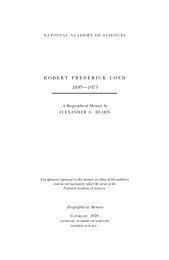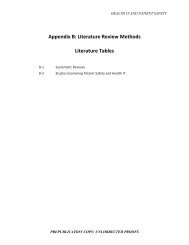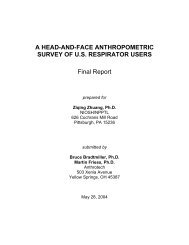ROGER WOLCOTT SPERRY - The National Academies Press
ROGER WOLCOTT SPERRY - The National Academies Press
ROGER WOLCOTT SPERRY - The National Academies Press
You also want an ePaper? Increase the reach of your titles
YUMPU automatically turns print PDFs into web optimized ePapers that Google loves.
316 BIOGRAPHICAL MEMOIRS<br />
Sperry was accepted to Oberlin College under a full academic<br />
scholarship, earning his board by waiting tables. He<br />
maintained an active interest in sports and was elected captain<br />
of the varsity basketball team, while receiving varsity<br />
letters as well in baseball and track. As an undergraduate<br />
he attended R. H. Stetson’s course, “Introduction to Psychology.”<br />
It was during a lecture by Stetson in this course<br />
that Sperry got the idea for a paper he published some<br />
twenty years later entitled “On the Neural Basis of the Conditioned<br />
Response” (1955). This short paper carries powerful<br />
theoretical implications for those interested in central<br />
nervous pathways in conditioned learning. Sperry remained<br />
at Oberlin College, in Stetson’s laboratory, through 1937,<br />
when he received his M.A. in psychology.<br />
Sperry took his Ph.D. in Zoology from the University of<br />
Chicago in 1941, under the tutelage of the renowned neuroscientist<br />
Paul Weiss. During that period, in addition to<br />
developing highly skilled neurosurgical techniques, he made<br />
the first of what was to become a number of successful<br />
challenges to existing concepts related to neuronal specificity<br />
and brain circuitry. In a series of carefully controlled<br />
and clearly written publications between 1941 and 1946,<br />
Sperry conclusively demonstrated that the rat’s motor system<br />
was “hard wired” and unmodifiable (following transplants)<br />
by training. This work clearly established that the<br />
basic circuitry of the mammalian central nervous system is<br />
largely hard wired for specific functions and seriously challenged<br />
Weiss’s “resonance principle” and “impulse specificity<br />
theory.”<br />
<strong>The</strong>se studies were to have an impact on human neurosurgery<br />
as well. From 1942 to 1945, during his military service<br />
with the Office of Scientific Research and Development,<br />
Nerve Injury Project, Sperry’s work, along with that<br />
of Weiss and others, resulted in a major change in the sur-


